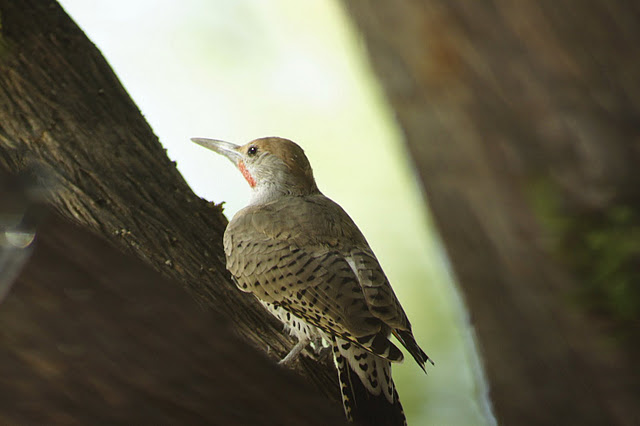Blue-Gray Gnatcatchers were the first birds of the day. It's hard to encapsulate their cuteness in a far away photograph, but I'll have many more chances at the DBG.
This fall plumage Yellow Warbler, still identified by the white eye-ring with the faint black stripe and yellow supercillium (streak above the eye), was the first to greet me at the Desert Wildflower Garden, although for the most part I saw only Lesser Goldfinches today (several dozen too, they were swarming).
I had a great look at a female Red-Shafted Flicker in the Gardens as well, and in addition to getting a good look at her red undersides, I got to see my first ever Woodpecker tongue!
With the speed of a frog and the daintiness of a hummingbird, the Flicker's tongue quickly steals breakfast out of every nook and cranny.
I also got to see some more Lincoln's Sparrows at the McCormick Ponds. This specimen seemed to have unusually large feet.
I met up with Mr. and Mrs. Butler Sr. at the McCormick Ponds. In addition to the Vermillion Flycatchers, Sparrows, and other commonalities, Mrs. Butler saw an American Kestrel while Mr. Butler also spotted some Spotted Sandpipers and the always lovely Say's Phoebe. As we decided to retreat from the rising sun and heat, we had a parting look at a juvenile Cooper's Hawk. I only saw my first Cooper's Hawk maybe 10 days ago, so this is the third one I've seen now in two weeks. Location Location Location!
Some courteous Killdeer stood guard by the parking lot. This is maybe the closest Killdeer have ever let me get, so naturally it was at a very beautiful area...
It was a lovely day of birding, a restorative jaunt in the natural world to refuel me through to next weekend.



















